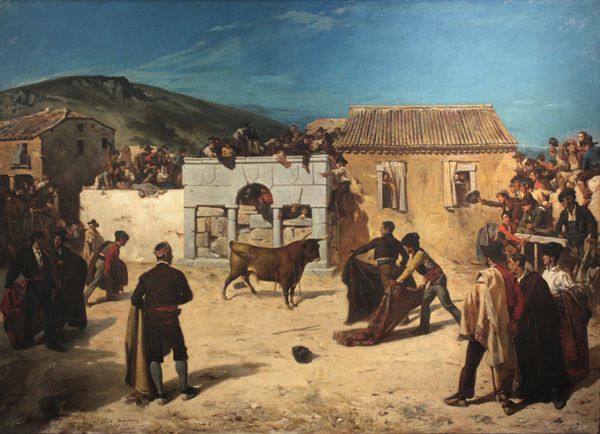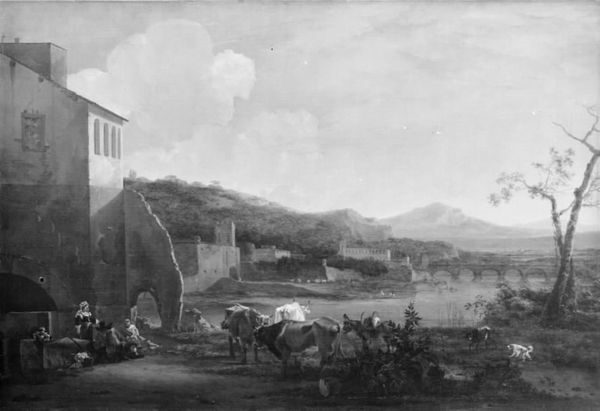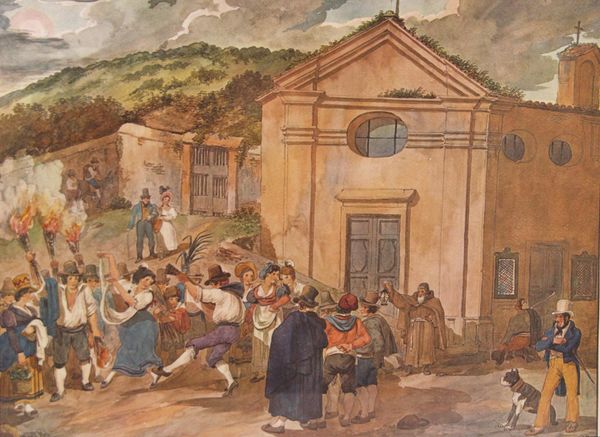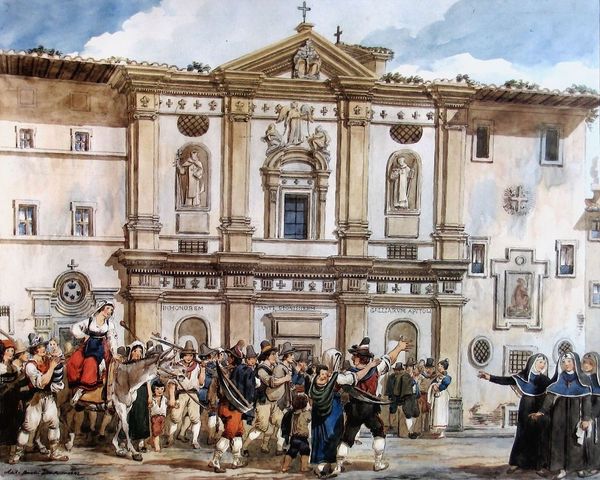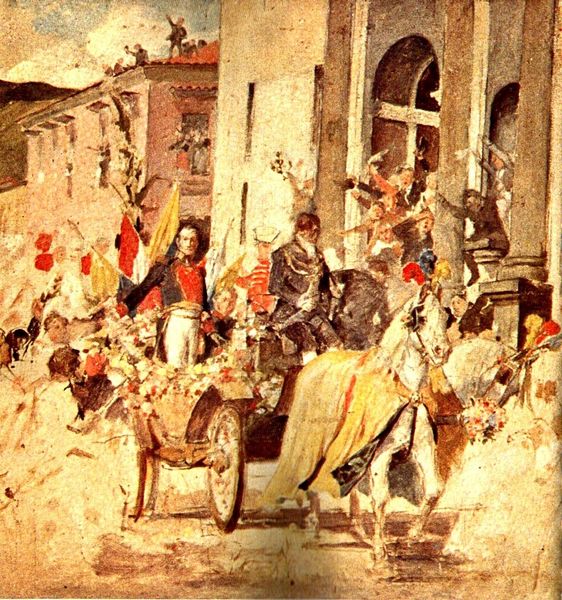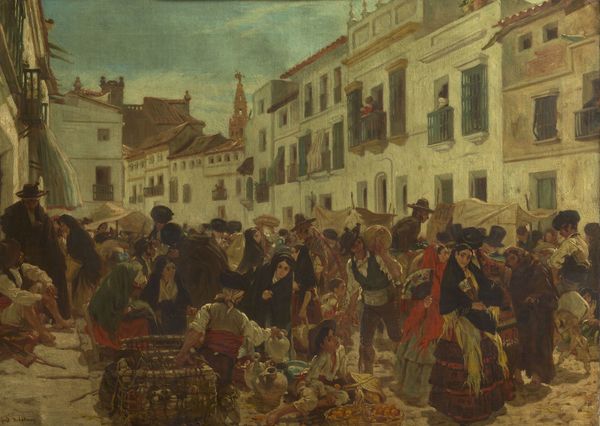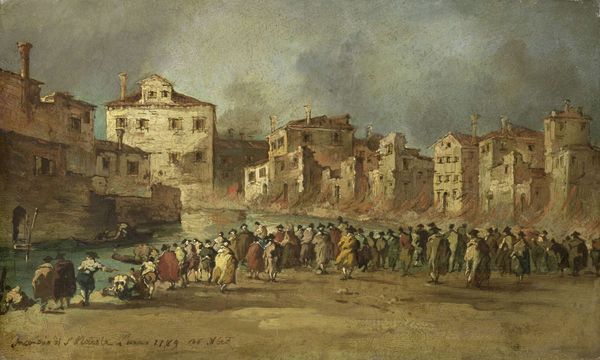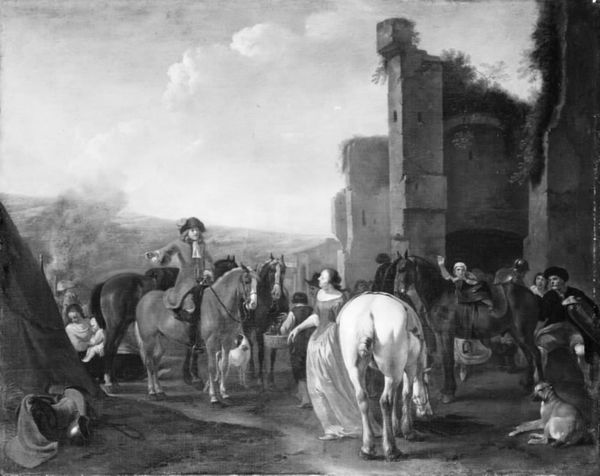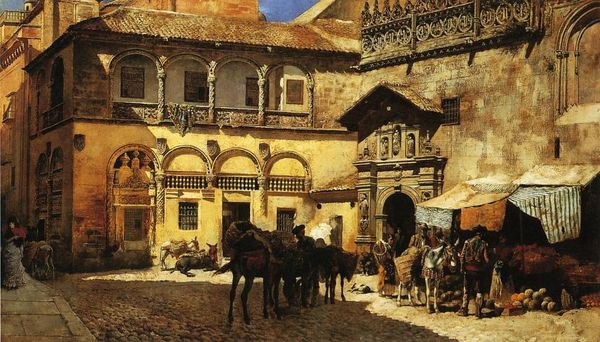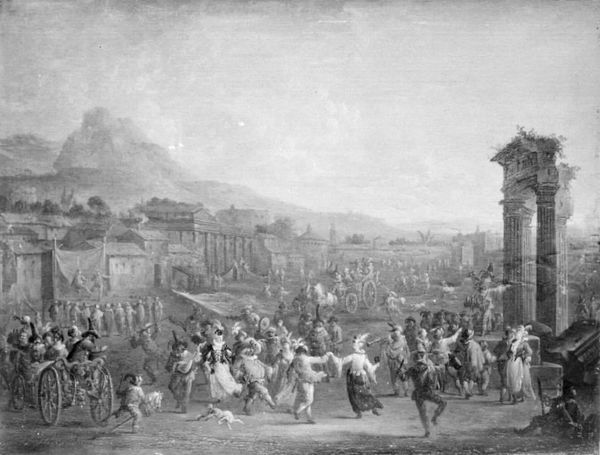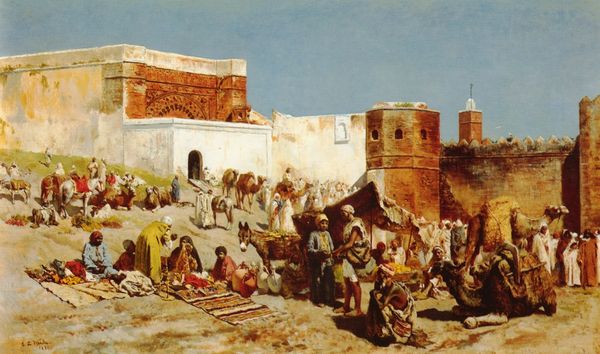
L'artiglieria Toscana a Montechiaro Salutata Dai Francesi Feriti a Solferino
0:00
0:00
painting, oil-paint, impasto
#
narrative-art
#
painting
#
impressionism
#
impressionist painting style
#
oil-paint
#
vehicle
#
landscape
#
impressionist landscape
#
handmade artwork painting
#
oil painting
#
impasto
#
painting painterly
#
cityscape
#
genre-painting
#
history-painting
#
italian-renaissance
#
realism
Copyright: Public domain
Curator: Telemaco Signorini's "L'artiglieria Toscana a Montechiaro Salutata Dai Francesi Feriti a Solferino," an oil on canvas, depicts a moment brimming with historical weight. What strikes you first? Editor: The scale, definitely, feels monumental, like witnessing history unfold before you. The colors, predominantly earth tones, create a subdued yet weighty atmosphere. There's almost a somber mood despite the apparent "salute" of the injured. Curator: Yes, the layering of the impasto technique is significant. It gives a certain physicality to the scene – you can almost feel the grit and texture of the dusty road and worn uniforms. Signorini seems to highlight the very materiality of warfare. Editor: And note how the artist utilizes symbolism: the flags, the injured, the placement of the artillery in front of what appears to be a church. It all coalesces into a complex meditation on nationhood, sacrifice, and perhaps the Church's position within it. The flags offer more than patriotism. It's like a plea for legitimacy of Tuscany itself. Curator: It's crucial to consider the social context too. This isn't just about soldiers; it's a snapshot of Italian unification, with Tuscany playing a pivotal role. The availability of resources, the specific techniques used in preparing the oil paints all speaks volumes about production under duress and constraint.. Editor: But are we also seeing a universal symbol of aftermath, of the cost of conflict beyond simple historical narrative? The wounded men hold universal resonance; the bowed heads hint at exhaustion that moves past the battle itself. They could come from any conflict. Curator: A very astute point. Signorini uses this particular historical moment as a frame but expands beyond that to more general considerations. Perhaps a deeper dive into Tuscan history around Italian unification helps to unlock this? Editor: Maybe. The real fascination lies in these complex iconographies Signorini creates for an individual, and cultural reflection. It speaks on multiple registers. It's an insightful blend that marries the moment with mythic visual representation. Curator: Absolutely. Analyzing Signorini's craft highlights its inherent ties to its historical and political setting. By using particular techniques that speak to the time, the artist's hand itself can underscore those ties as well, highlighting the materials available and their context. Editor: The beauty of images is how they accrue meaning; how a specific scene transcends its own time. This painting is potent with lasting images we might return to for as long as there are flags of allegiance flying in any field of battle.
Comments
No comments
Be the first to comment and join the conversation on the ultimate creative platform.
